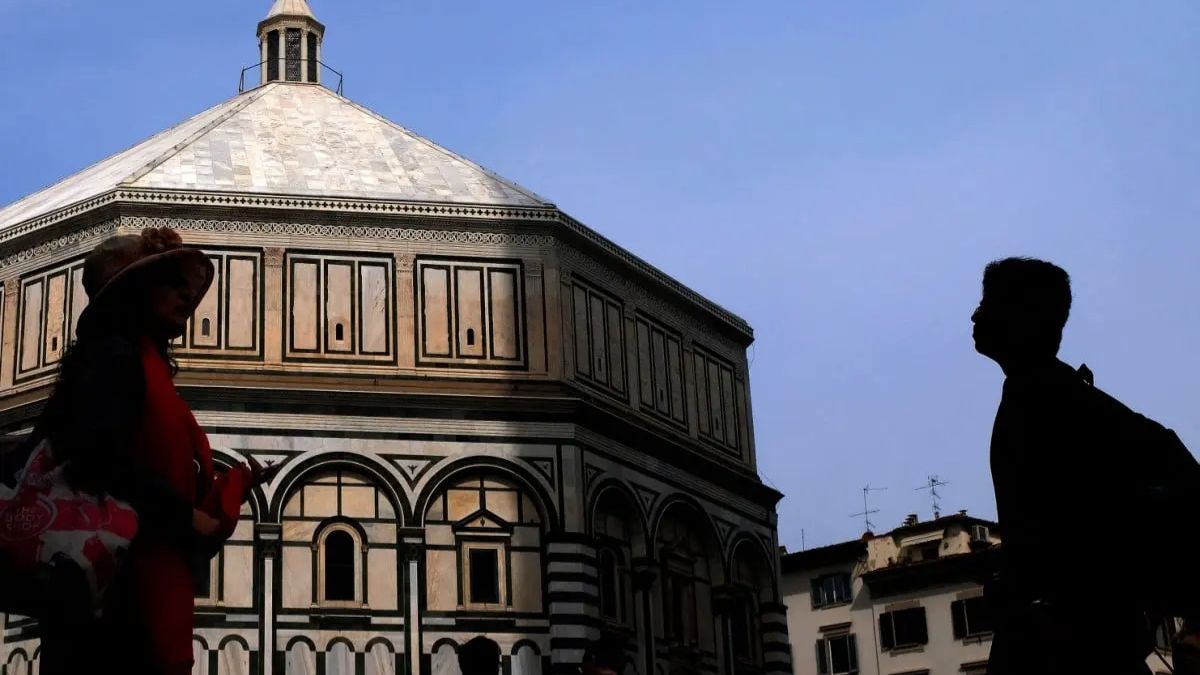The stunning capital of the Tuscany region of Italy, which draws millions of tourists each year, has taken bold steps to combat the challenges of overtourism.
In recent years, the historic Italian city of Florence, like many other places in Italy and elsewhere, has seen a drastic increase in tourists, leading to a backlash from locals who complain of the city growing increasingly unsustainable.
This week, as the Rennaisance city prepares to host tourism ministers from the G7 group of the world’s most advanced economies and seek to significantly boost the country’s place as a top visitor destination, authorities have approved a 10-point plan to tackle the problem.
Here’s a closer look.
The big tourism wave
Florence, renowned for its stunning Renaissance art and architecture, has long attracted tourists to Italy.
Data from the national statistics bureau ISTAT indicates that 2023 saw a record-breaking 134 million tourist arrivals in Italy, making it the fourth most popular destination according to the UN World Tourism Barometer, behind France, Spain, and the United States.
However, Florence’s council has raised concerns, stating that the surge in tourism is now overwhelming for local residents. Over 7.8 million tourists visited Florence in the first nine months of 2024 alone.
“The city is no longer able to support, without weakening its heritage value and seeing its overall livability compromised, such a massive presence of activities and means for exclusive tourist use concentrated in just five square kilometres,” the council’s statement read.
In fact, at a recent warm-up event, Tourism Minister Daniela Santanche had a contrary opinion.
While she acknowledged that certain historic cities were facing challenges due to high visitor numbers, she emphasised that Italy as a whole is not maximising its tourism potential, suggesting that the country could attract 50 million more visitors annually.
“We can grow much more, we can develop much more, and the industry of tourism can truly become the leading industry of our nation,” she said, as quoted by The Independent.
In 2023, the tourism sector accounted for around 10.5 per cent of Italy’s GDP, according to research by Statista.
Restrictions meant to make Florence ’livable'
Florence Mayor Sarah Funaro recently unveiled a 10-point plan designed to tackle the challenge of overtourism in the historic city.
The plan, led by the centre-left mayor, includes a prohibition on installing key boxes in the historic centre, aimed at reducing short-term rentals that are popular among tourists. This measure is set to take effect in 2025.
Key boxes—small digital padlocked devices used by short-term rental owners to leave keys for guests—have become a symbol of local frustration. Many Florentines see them as a sign of the influx of tourists, whose numbers have surged since the COVID-19 pandemic.
In a recent demonstration, residents taped red Xs over the key boxes, expressing their anger at the transformation of the city centre. They argued that the historic palazzi and narrow streets had been turned into a hub of short-term vacation rentals, pushing out locals and long-established businesses.
Additionally, the city council has introduced a ban on the use of loudspeakers by tour guides and imposed restrictions on “atypical vehicles” like golf carts, which have become a popular way for tour guides to navigate restricted traffic zones in the city.
“The message we want to give is that we care about our city, and we care that Florence can be attractive but above all liveable for residents,” Funaro stated. “With these measures, we will protect Florence. Our primary objective is to ensure that our city can maintain its roots, its nature, and its identity.”
Italy battles overtourism
Florence has become the latest Italian city to make headlines for addressing the issue of overtourism.
This week, the Pompeii Archaeological Park announced that it is set to implement a cap on daily visitor numbers, limiting them to 20,000. The move aims to alleviate the strain on the ancient Roman site amid a recent spike in tourism.
Milan also recently introduced stricter measures, approving a €2 increase in the tourist tax for 4 and 5-star hotel guests. Starting next year, the fee will rise from €5 to €7.
Last year, Venice implemented a tourist entry fee, a controversial decision that will be expanded in 2025, doubling the number of applicable days and increasing the cost for last-minute bookings.
Meanwhile, in Rome, efforts are underway to manage crowds at the famous Trevi Fountain, as the city prepares for the Vatican’s Jubilee Year 2025. The event is expected to draw over 30 million tourists and pilgrims to the capital.
With input from agencies
)